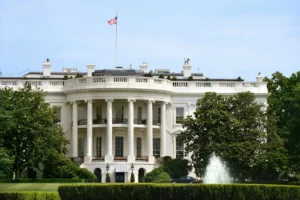This month marks a full year since the Bank of England base rate rose to 5.25%. Moneyfactscompare.co.uk has analysed the average rates offered across savings and mortgages and how the markets have changed over time.
Mortgage market analysis
- In August 2023 both the average two- and five-year fixed rates were above 6%, at 6.85% and 6.37%, respectively. Since the start of February 2024, the average two-year fixed rate has risen from 5.56% to 5.77% and the average five-year fixed rate has risen from 5.18% to 5.38%. These average rates have, however, fallen from 5.95% and 5.53% respectively since last month.
- On a 10-year fixed rate mortgage, the average rate has risen from 5.87% to 5.93% since February 2024. The rate has fallen from 6.01% since the start of July 2024. The rate was 5.89% in August 2023.
- The average standard variable rate (SVR) stands at 8.16%, down from 8.17% in February 2024. The rate has fallen from 8.17% since the start of July 2024. The average SVR has now been above 8% for almost a year. The rate was 7.85% in August 2023.
| Mortgage market analysis | ||||||
| Average mortgage rates | Dec-21 | Aug-22 | Aug-23 | Feb-24 | Jul-24 | Aug-24 |
| Standard variable rate (SVR) | 4.40% | 5.17% | 7.85% | 8.17% | 8.17% | 8.16% |
| Two-year fixed mortgage | 2.34% | 3.95% | 6.85% | 5.56% | 5.95% | 5.77% |
| Five-year fixed mortgage | 2.64% | 4.08% | 6.37% | 5.18% | 5.53% | 5.38% |
| 10-year fixed mortgage | 2.97% | 4.19% | 5.89% | 5.87% | 6.01% | 5.93% |
| Average rates shown are as at the first available day of the month, unless stated otherwise. Source: Moneyfactscompare.co.uk | ||||||
Rachel Springall, Finance Expert at Moneyfactscompare.co.uk, said:
“A year has now gone by since the Bank of England last increased the base rate, but other influences have been at play to impact the mortgage market. Fixed mortgage rates have been falling at a steady pace, with lenders feeling more encouraged to re-price their deals due to lower swap rates. Consequently, the average rates on a two- and five-year fixed rate mortgage have both decreased month-on month for the first time in six months. Waiting six months for rates to fall will no doubt require a lot of patience from borrowers who are counting down the days towards the end of their low-rate fixed deal. However, despite the latest falls, borrowers may want to see a bigger injection of rate competition, particularly as rates are higher than they were six months ago. Those desperate to secure a new deal for peace of mind could do so a few months before they come off their existing deal, as some lenders will let borrowers do this from three to six months in advance.
“Borrowers coming off a deal this year must acknowledge that they will need to set aside more of their income to cover higher repayments. On average, a two-year fixed deal was priced in at 3.95% in August 2022, and back in August 2019 a five-year fixed was 2.84%. However, it is still cheaper to lock into a fixed mortgage than sit on a revert rate. The Standard Variable Rate (SVR) has sat above 8% for almost an entire year and has almost doubled since the Bank of England started increasing base rate back in December 2021. A typical mortgage being charged the current average SVR of 8.16% would be paying £380 more per month, compared to a typical two-year fixed rate*. First-time buyers trying to get their foot onto the property ladder will find some competitive deals out there, but their home-ownership dreams weigh on whether they can find an affordable property, particularly if they don’t have the Bank of Mum and Dad to make their dream a reality.”
*Average standard variable rate (SVR) is currently 8.16%. Calculations based on a £250,000 mortgage over a 25-year term on a repayment basis. SVR repayment £1,956 per month, versus £1,576 per month on 5.77% two-year fixed rate.
Savings market analysis
- In August 2023, the average easy access account and easy access cash ISA rates were less than 3%, at 2.81% and 2.86%, respectively. Since the start of February 2024, the average easy access savings rate has fallen from 3.17% to 3.15% and the average easy access ISA rate rose from 3.30% to 3.36%. The average easy access rate has risen from 3.11% since July 2024, the average easy access ISA rate has risen from 3.32%.
- In August 2023, the average notice account and notice ISA rates were less than 4%, at 3.90% and 3.65%, respectively. The average notice rate is 4.29%, down from 4.30% in February 2024 and the average rate on a notice ISA has risen from 4.16% to 4.22%. The average notice rate and average notice ISA rate rose month-on-month.
| Savings market analysis | ||||||
| Average savings rates | Dec-21 | Aug-22 | Aug-23 | Feb-24 | Jul-24 | Aug-24 |
| Easy access | 0.20% | 0.69% | 2.81% | 3.17% | 3.11% | 3.15% |
| Notice account | 0.54% | 1.17% | 3.90% | 4.30% | 4.28% | 4.29% |
| Easy access ISA | 0.26% | 0.76% | 2.86% | 3.30% | 3.32% | 3.36% |
| Notice ISA | 0.37% | 1.07% | 3.65% | 4.16% | 4.19% | 4.22% |
| Averages based on £10,000 gross rate. Average rates shown are as at the first available day of the month, unless stated otherwise. Source: Moneyfactscompare.co.uk | ||||||
Rachel Springall, Finance Expert at Moneyfactscompare.co.uk, said:
“Savers need to make sure they proactively check and switch their flexible pots if they haven’t done so for the past few months. Just because the Bank of England base rate has remained at 5.25% over the past year does not mean saving rates have stagnated. In fact, challenger banks and mutuals offer some attractive rates, so it’s wise to look beyond the more familiar big banks. Indeed, the convenience of saving cash in an easy access account with the biggest high street banks comes at a cost. The average rate paid across the biggest high street banks** is 2.01%, which is less than the current market average easy access rate across all savings providers. The last time base rate rose was in August 2023, by 0.25%; six months later the average easy access rate rose to 3.17%, but again, average rate paid across the biggest high street banks was less, at 2.04%**.
“There are expectations for base rate to fall before the year is over, so those savers who want a guaranteed return would be wise to consider either a fixed rate bond or ISA for a guaranteed return. It is also imperative that savers with bigger pots keep an eye on whether they are due to breach their Personal Savings Allowance (PSA), and if they haven’t already, consider utilising their ISA allowance to protect their money from tax. Once a base rate cut happens, it can have a big impact on the variable rate market in a short time frame but can also trigger providers to adjust fixed rates as a consequence. In March 2020, the base rate was cut twice, down from 0.75% to 0.25% and then again to 0.10%. In six months thereafter, the average easy access rate fell from 0.56% at the start of March 2020 to 0.22% in September 2020. This was an unprecedented period due to the pandemic, but it is important for savers to prepare themselves for rate cuts should the Bank of England base rate fall.”
**High street banks include Bank of Scotland, Barclays Bank, Halifax, HSBC, Lloyds Bank, NatWest, Royal Bank of Scotland and Santander. Averages collected from gross interest rates paid across all live easy access accounts with these brands based on a £10,000 deposit, latest rates as at 31 July 2024.







![[uns] house of commons, parliament](https://ifamagazine.com/wp-content/uploads/wordpress-popular-posts/788182-featured-300x200.webp)






